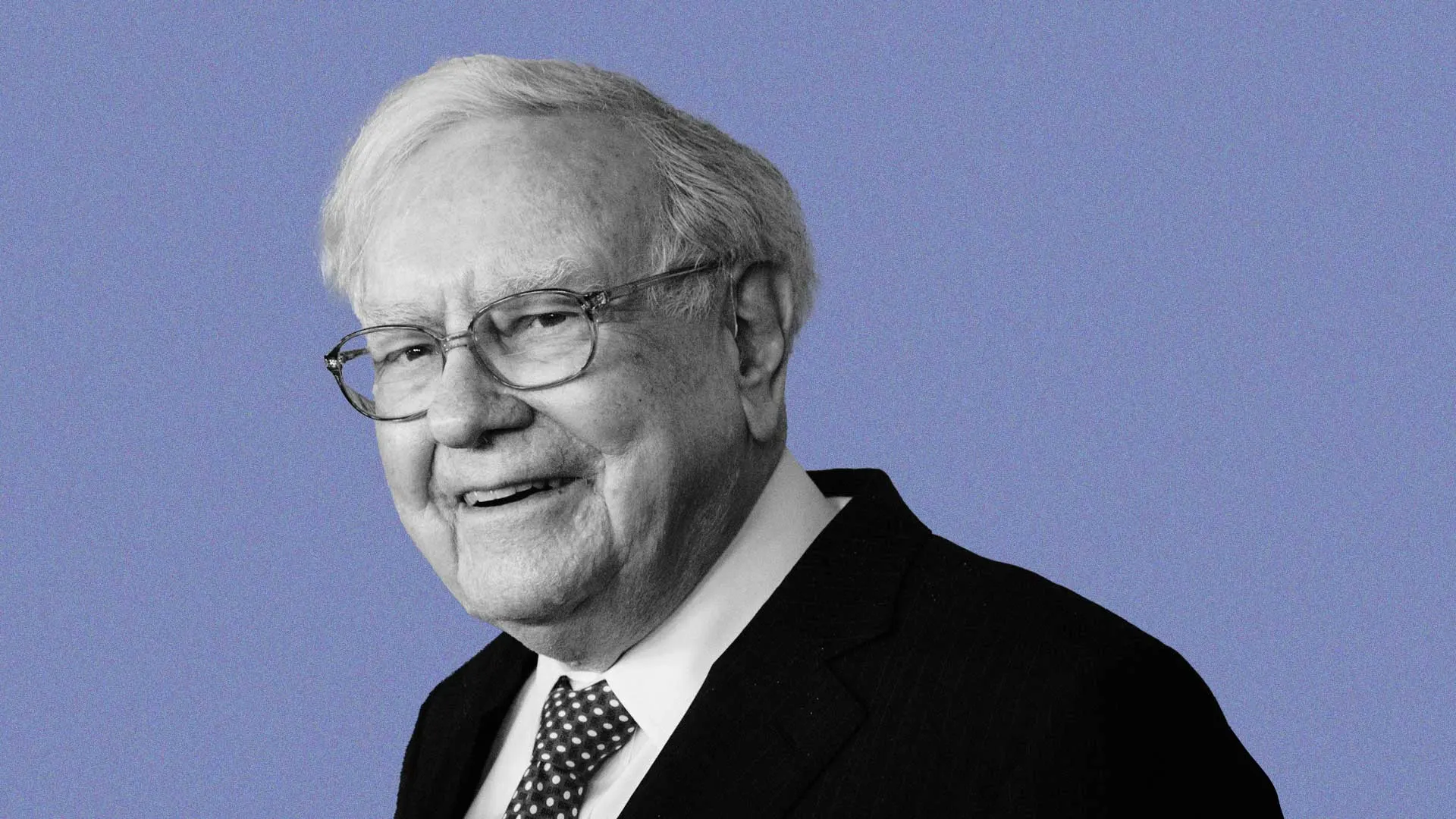Table of Contents
Early Life and Beginnings
Warren Edward Buffett was born on August 30, 1930, in Omaha, Nebraska, to Howard and Leila Buffett. His father, Howard, was a stockbroker and later a U.S. Congressman, which provided young Warren with an early exposure to the world of finance and politics. Warren showed an early aptitude for numbers and business, often engaging in entrepreneurial activities such as selling chewing gum, Coca-Cola, and weekly magazines door-to-door.
Warren Buffett’s interest in investing was sparked at a young age. At just 11 years old, he purchased his first stock, three shares of Cities Service Preferred, for himself and his sister Doris. Although the stock initially dropped, it eventually rebounded, and Buffett sold it for a small profit. This early experience taught him the importance of patience and long-term thinking in investing.
Education and Early Career
Warren Buffett attended the University of Nebraska-Lincoln, where he graduated with a Bachelor of Science in Business Administration. He then applied to Harvard Business School but was rejected, a setback that led him to Columbia Business School, where he studied under Benjamin Graham, the father of value investing. Graham’s teachings would profoundly influence Buffett’s investment philosophy.
After graduating from Columbia, Buffett returned to Omaha and began working at his father’s brokerage firm. However, he soon moved to New York to work directly with Graham at Graham-Newman Corp. During this time, Buffett honed his skills in analyzing financial statements and identifying undervalued companies.
The Birth of Buffett Partnership Ltd.
In 1956, Warren Buffett returned to Omaha and started Buffett Partnership Ltd. with an initial investment of $100 from his own pocket. He pooled money from family and friends, eventually raising $105,000. Over the next 13 years, Buffett’s investment partnership achieved an annual compound return of 29.5%, significantly outperforming the Dow Jones Industrial Average.
Buffett’s investment strategy during this period was heavily influenced by Graham’s principles of value investing. He focused on buying undervalued stocks with strong fundamentals and holding them for the long term. This approach allowed him to generate substantial returns for his investors.
Acquisition of Berkshire Hathaway
In 1962, Buffett began buying shares in a struggling textile company called Berkshire Hathaway. Initially, he saw it as a classic value investment, but he eventually realized that the textile industry was in decline. However, instead of divesting, Buffett transformed Berkshire Hathaway into a holding company, using its cash flow to invest in other businesses.
Under Warren Buffett’s leadership, Berkshire Hathaway evolved into a diversified conglomerate, with investments in insurance, utilities, railroads, and consumer goods. Some of its most notable holdings include Geico, Dairy Queen, and See’s Candies. Buffett’s ability to identify and acquire high-quality businesses at reasonable prices became a hallmark of his investment strategy.
The Berkshire Hathaway Era
By the 1980s, Berkshire Hathaway had become a major force in the investment world. Buffett’s annual shareholder letters, which provided insights into his investment philosophy and business acumen, gained a cult following. He emphasized the importance of understanding a business’s intrinsic value, the power of compound interest, and the need for a margin of safety in investments.
Buffett’s investment philosophy evolved over time, incorporating elements of Philip Fisher’s growth investing and Charlie Munger’s emphasis on quality businesses. Munger, who became Buffett’s right-hand man and Vice Chairman of Berkshire Hathaway, played a crucial role in shaping Buffett’s thinking. Together, they focused on acquiring businesses with strong competitive advantages, or “moats,” and holding them for the long term.
Philanthropy and Personal Life
Warren Buffett is also known for his philanthropic efforts. In 2006, he announced that he would donate the majority of his wealth to the Bill & Melinda Gates Foundation and other charitable organizations. This pledge, known as the Giving Pledge, has inspired other billionaires to commit the majority of their wealth to philanthropy.
Buffett’s personal life has been relatively modest despite his immense wealth. He still lives in the same house he purchased in Omaha in 1958 for $31,500. Known for his frugality, Buffett often emphasizes the importance of living within one’s means and avoiding unnecessary debt.
Lessons and Quotes from Warren Buffett
Warren Buffett’s life and career offer numerous lessons for investors, entrepreneurs, and individuals seeking financial independence. Here are some key takeaways and quotes:
- Value Investing: Buffett’s success is rooted in the principles of value investing, which involve buying undervalued stocks with strong fundamentals and holding them for the long term.
- Quote: “Price is what you pay. Value is what you get.”
- Patience and Long-Term Thinking: Buffett’s investment strategy emphasizes the importance of patience and long-term thinking. He often advises against trying to time the market or chase short-term gains.
- Quote: “The stock market is designed to transfer money from the Active to the Patient.”
- Margin of Safety: Buffett always looks for a margin of safety when making investments, ensuring that he pays less than the intrinsic value of a business to minimize risk.
- Quote: “Rule No. 1: Never lose money. Rule No. 2: Never forget Rule No. 1.”
- Quality Over Quantity: Buffett prefers to invest in a few high-quality businesses rather than diversifying too broadly. He looks for companies with strong competitive advantages and competent management.
- Quote: “It’s far better to buy a wonderful company at a fair price than a fair company at a wonderful price.”
- Continuous Learning: Buffett is an avid reader and spends a significant amount of time each day reading and learning. He believes that continuous learning is essential for success in investing and life.
- Quote: “The more you learn, the more you earn.”
- Frugality and Simplicity: Despite his wealth, Buffett leads a simple and frugal life. He believes in living within one’s means and avoiding unnecessary debt.
- Quote: “Do not save what is left after spending, but spend what is left after saving.”
- Ethical Behavior: Buffett places a high value on integrity and ethical behavior in business. He believes that trust and reputation are invaluable assets.
- Quote: “It takes 20 years to build a reputation and five minutes to ruin it. If you think about that, you’ll do things differently.”
- Philanthropy: Buffett’s commitment to giving back to society is a testament to his belief in the importance of using wealth to make a positive impact on the world.
- Quote: “If you’re in the luckiest 1% of humanity, you owe it to the rest of humanity to think about the other 99%.”
Where is Warren Buffett Now?
As of 2023, Warren Buffett remains the Chairman and CEO of Berkshire Hathaway, a position he has held for decades. Despite his age, Buffett continues to play an active role in the company’s investment decisions and operations. Berkshire Hathaway’s portfolio includes a diverse range of businesses and investments, with a market capitalization exceeding $700 billion.
Warren Buffett’s annual shareholder meetings, often referred to as “Woodstock for Capitalists,” attract thousands of attendees from around the world. These events provide insights into Buffett’s investment philosophy, business acumen, and outlook on the economy.
Buffett’s influence extends beyond the business world. He is widely regarded as one of the most successful investors in history, and his teachings continue to inspire millions of people around the globe. His emphasis on value investing, ethical behavior, and long-term thinking has left an indelible mark on the world of finance.
Conclusion
Warren Buffett’s journey from a young boy selling gum and magazines to becoming one of the wealthiest and most respected investors in the world is a testament to the power of patience, discipline, and continuous learning. His life and career offer valuable lessons for anyone seeking financial independence, business success, or personal fulfillment.
Buffett’s emphasis on value investing, long-term thinking, and ethical behavior has not only made him a successful investor but also a role model for generations of entrepreneurs and investors. His commitment to philanthropy and giving back to society further underscores the importance of using wealth to make a positive impact on the world.
As Warren Buffett continues to lead Berkshire Hathaway and share his wisdom with the world, his legacy as the “Oracle of Omaha” will undoubtedly endure for generations to come. Whether you’re an aspiring investor, a seasoned entrepreneur, or simply someone looking to improve your financial literacy, there is much to learn from the life and teachings of Warren Buffett.
THE REVEALING HISTORY OF ESPIONAGE
Introduction to the History of Feminism
Feminism, the advocacy for women’s rights and equality, has shaped societies, challenged norms, and transformed lives for centuries. From the suffragettes of the 19th century to the #MeToo movement of today, feminism has evolved into a powerful force for change. This article explores the history of feminism, tracing its origins, key milestones, and ongoing challenges. Whether you’re a history enthusiast, a social justice advocate, or simply curious about the fight for gender equality, this deep dive into feminism’s past and present will inspire and inform.
The Origins of Feminism: Early Voices for Equality
Ancient and Medieval Roots
While the term “feminism” is relatively modern, the struggle for women’s rights has ancient roots. In Ancient Greece, philosophers like Plato argued for women’s inclusion in governance, while figures like Hildegard of Bingen in medieval Europe challenged gender norms through their writings and leadership.
The Enlightenment and Early Feminist Thought
The 18th-century Enlightenment brought new ideas about individual rights and equality, inspiring early feminist thinkers. Mary Wollstonecraft, often called the “mother of feminism,” published A Vindication of the Rights of Woman in 1792, arguing that women deserved the same education and opportunities as men. Her work laid the foundation for modern feminist thought.
First-Wave Feminism: The Fight for Suffrage
The Seneca Falls Convention (1848)
The first wave of feminism emerged in the 19th century, focusing on legal inequalities, particularly the right to vote. The Seneca Falls Convention in 1848, organized by Elizabeth Cady Stanton and Lucretia Mott, marked the beginning of the organized women’s rights movement in the United States. The convention’s Declaration of Sentiments demanded equality in education, employment, and voting.
The Suffragette Movement
In the late 19th and early 20th centuries, suffragettes like Susan B. Anthony, Emmeline Pankhurst, and Sojourner Truth led the fight for women’s suffrage. Their activism included protests, marches, and civil disobedience. In 1920, the 19th Amendment granted American women the right to vote, while British women achieved partial suffrage in 1918 and full suffrage in 1928.





3 thoughts on “Warren Buffett: The Daring Oracle of Omaha”